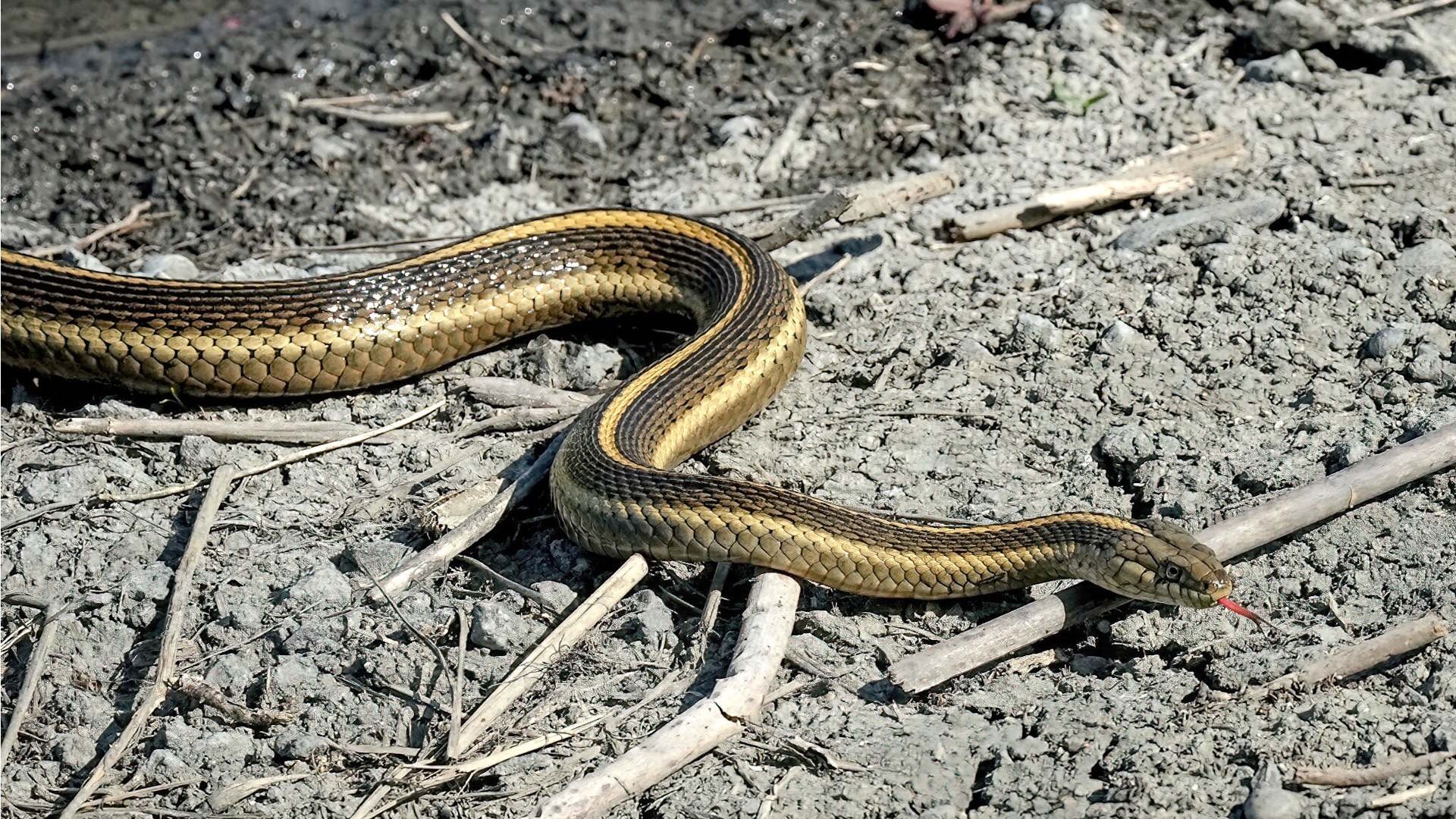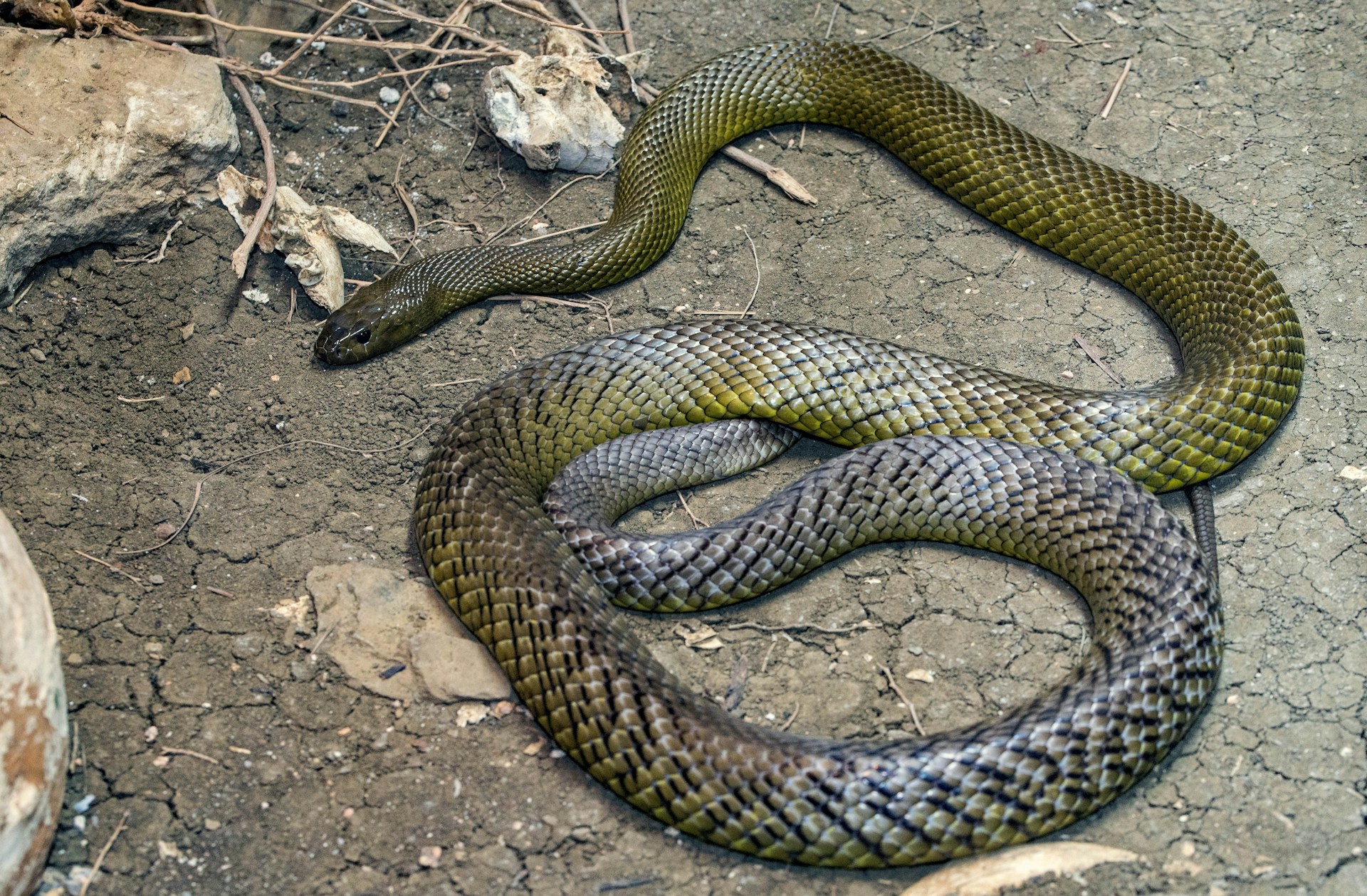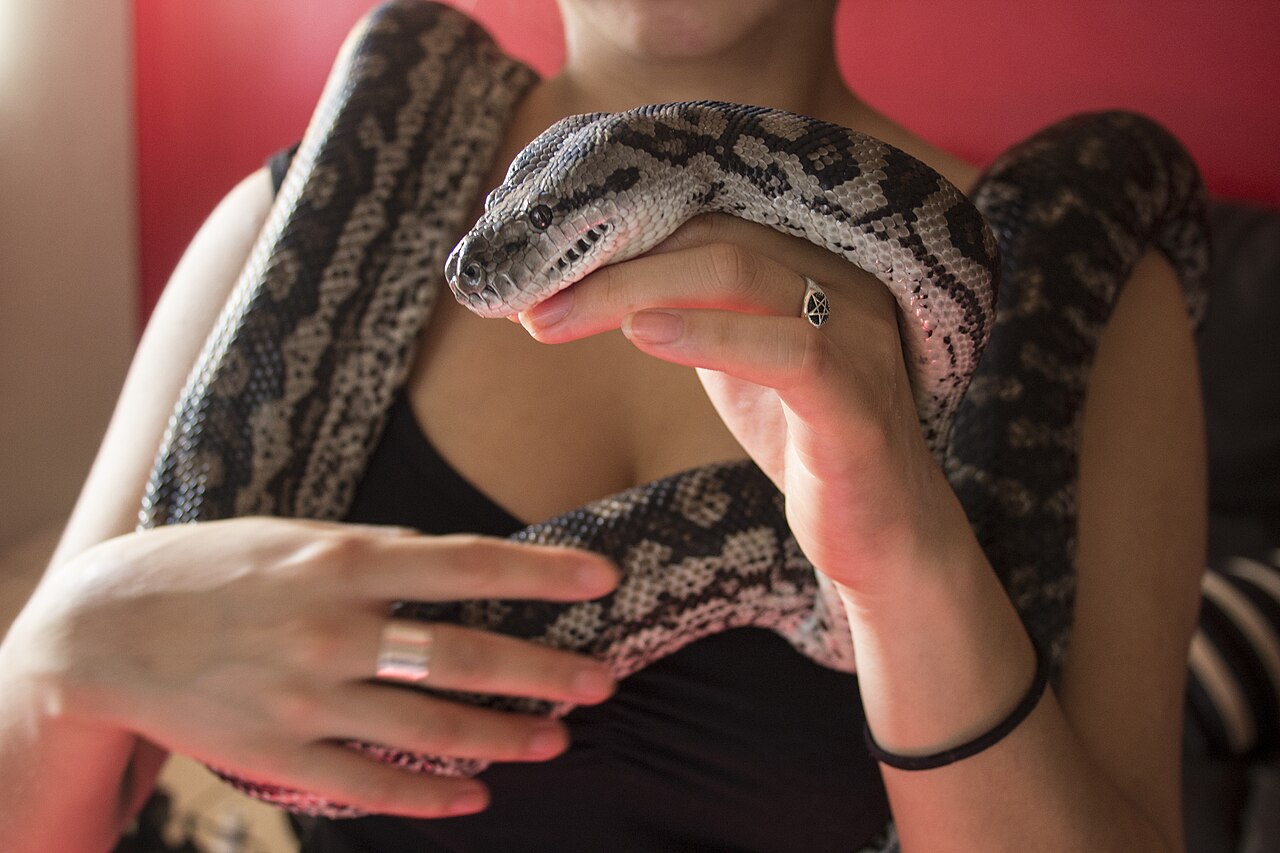When most people think of snakes, they often imagine dull browns and greens, or the warning colors of venomous species. However, the snake world contains a remarkable palette of non-venomous species adorned with vibrant colors and intricate patterns that rival any venomous counterpart. These harmless serpents showcase nature’s artistic flair through their scales, combining functionality with breathtaking beauty. From rainbow-hued constrictors to iridescent garden dwellers, these colorful reptiles demonstrate that you don’t need venom to stand out in the animal kingdom. Let’s explore some of the most visually spectacular non-venomous snakes from around the globe, examining their unique coloration, habitats, and the evolutionary advantages their striking appearances provide.
Brazilian Rainbow Boa (Epicrates cenchria)
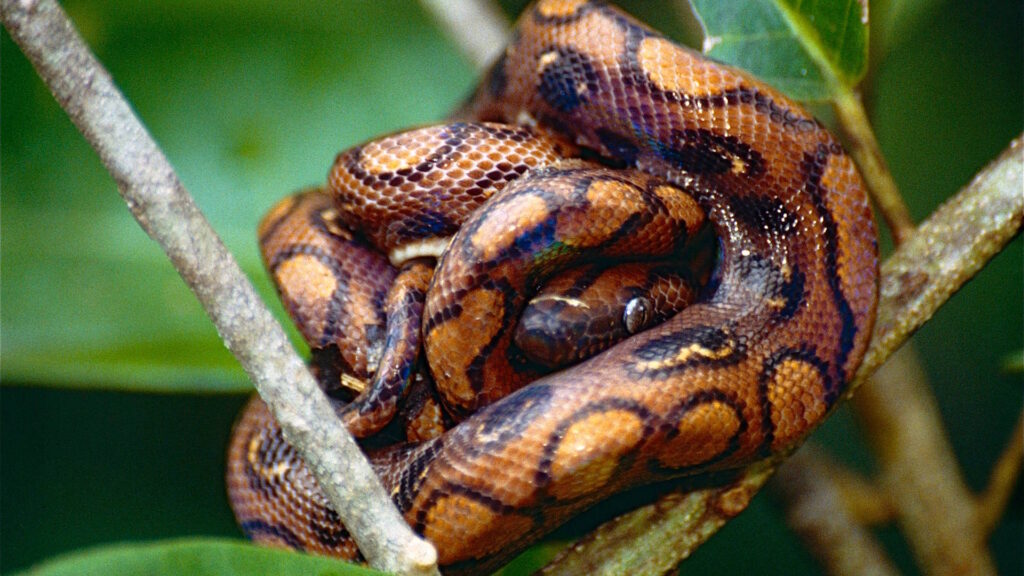
The Brazilian Rainbow Boa earns its name from the extraordinary iridescent sheen that makes its scales appear to shimmer with all colors of the rainbow when light hits them at certain angles. This optical phenomenon results from microscopic ridges on their scales that refract light, creating a prismatic effect similar to what occurs on the surface of a soap bubble. Native to the tropical forests of Central and South America, these medium-sized constrictors typically display a base color of rich reddish-brown adorned with black rings and rosettes. Beyond their spectacular appearance, Brazilian Rainbow Boas are known for their docile temperament when properly handled, making them popular in the exotic pet trade among experienced keepers who can provide their specific humidity and temperature requirements.
San Francisco Garter Snake (Thamnophis sirtalis tetrataenia)
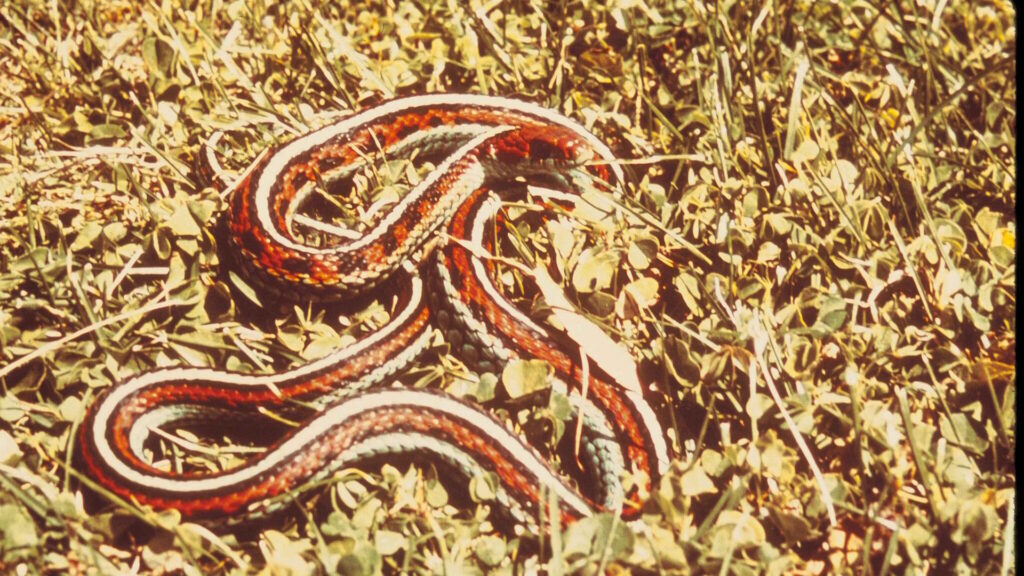
Often described as the most beautiful snake in North America, the San Francisco Garter Snake sports a stunning pattern of bright blue-green sides, a vibrant red-orange dorsal stripe, and bold black and red stripes running the length of its slender body. Endemic to the San Francisco Peninsula in California, this endangered subspecies of the common garter snake inhabits wetlands, marshes, and grasslands near water bodies where it hunts amphibians and small fish. Despite their non-venomous nature, these snakes can release a foul-smelling musk when threatened, a defensive mechanism that helps compensate for their eye-catching coloration that might otherwise make them easy targets for predators. Conservation efforts are ongoing to protect this visually spectacular snake from habitat loss and fragmentation that has severely reduced its population.
Rhinoceros Rat Snake (Rhynchophis boulengeri)
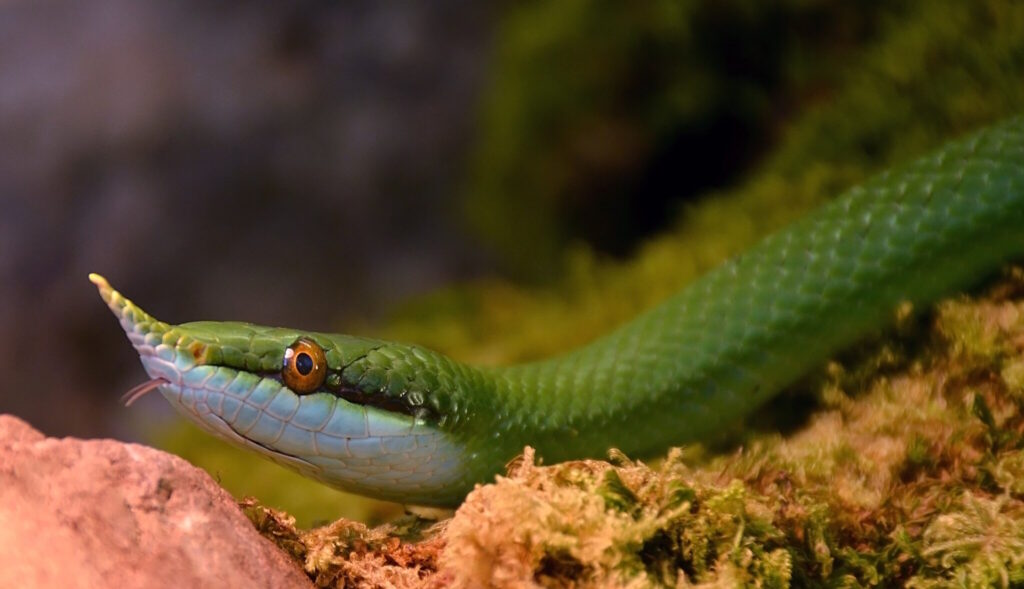
The Rhinoceros Rat Snake stands out not only for its vibrant emerald green coloration but also for the distinctive pointed scale protruding from its snout that gives it its rhinoceros-like name. Native to the mountainous forests of Vietnam, China, and Laos, juvenile specimens display an even more striking appearance with bright blue tails that gradually transition to green as they mature. These arboreal snakes possess exceptionally large eyes with horizontal pupils that provide excellent vision for navigating through tree branches and hunting birds, lizards, and small mammals. Their remarkable adaptation to tree-dwelling life includes a prehensile tail and specialized belly scales that provide grip when climbing, complementing their camouflage coloration that helps them blend into foliage while still appearing breathtaking to human observers.
Kenyan Sand Boa (Eryx colubrinus)
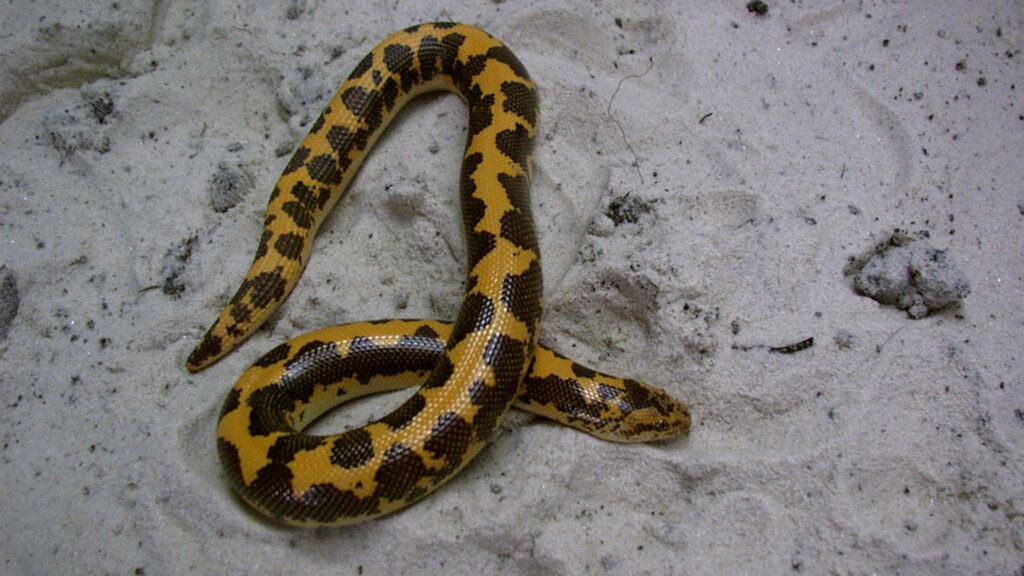
The Kenyan Sand Boa exhibits a striking pattern of reddish-orange to bright yellow background coloration adorned with rich chocolate-brown or black blotches that create a bold contrast. Unlike many colorful snakes that live in trees or visible areas, these snakes have evolved their vibrant appearance despite spending much of their time burrowed in sandy substrates across northeastern Africa, including Kenya, Sudan, and Egypt. Their unusual hunting strategy involves laying partially buried with only their eyes and nose exposed, waiting for small mammals to pass by before striking with surprising speed. Female Kenyan Sand Boas grow significantly larger than males, with some specimens displaying more vibrant and high-contrast patterns, making them a fascinating example of sexual dimorphism among colorful snake species.
California Mountain Kingsnake (Lampropeltis zonata)

The California Mountain Kingsnake displays a spectacular tricolor pattern of alternating bands of red, black, and white or cream that encircle its entire body. This striking coloration is a classic example of Batesian mimicry, as it closely resembles the warning colors of the venomous coral snake, despite being completely harmless to humans. Found in diverse habitats from forests to rocky hillsides in California and parts of Oregon, Nevada, and Mexico, these secretive snakes are most active during dawn and dusk when they hunt lizards, small mammals, and bird eggs. Unlike many other colorful snakes, California Mountain Kingsnakes thrive in cooler mountainous regions at elevations up to 9,000 feet, with their vibrant patterns showing remarkable variation across different populations based on their geographic location.
Green Tree Python (Morelia viridis)
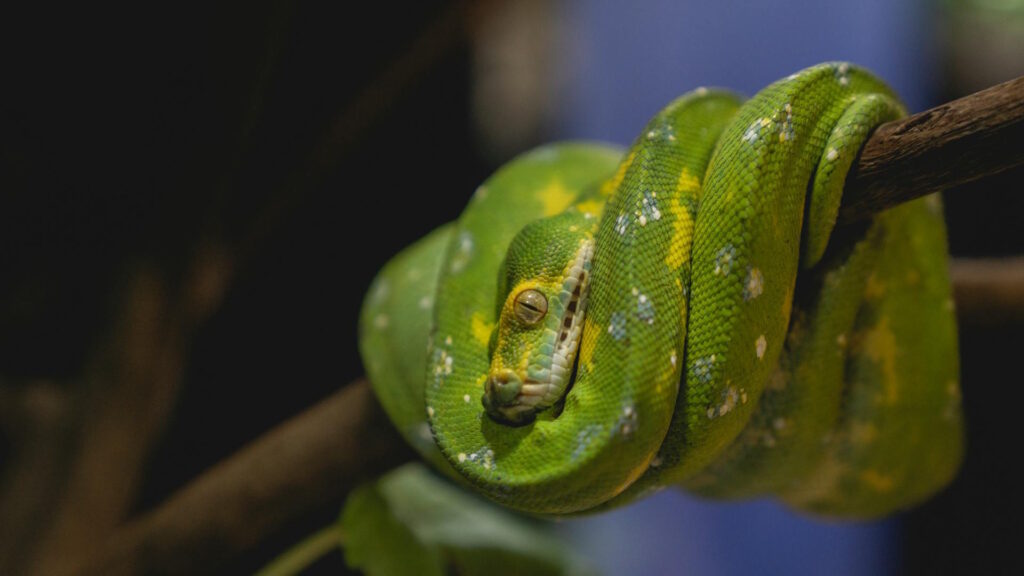
The Green Tree Python showcases an intense, almost luminous green coloration that appears almost artificial in its perfection, complemented by a series of white or yellow dorsal markings that create a broken vertebral stripe. What makes these snakes particularly fascinating is their dramatic ontogenetic color change – juveniles hatch in bright yellow or red variations before gradually transitioning to their adult emerald green over the first 6-12 months of life. Native to the rainforests of New Guinea, Indonesia, and the Cape York Peninsula of Australia, these arboreal specialists spend most of their lives draped across tree branches in their distinctive coiled posture with their head resting in the center. Their specialized heat-sensing pits along the lower jaw help them locate warm-blooded prey in the dark canopy, while their spectacular coloration provides near-perfect camouflage among the leaves.
Corn Snake (Pantherophis guttatus)

The Corn Snake displays a remarkable range of color variations in the wild, from the classic orange or reddish-brown base adorned with vibrant red-bordered black blotches to more uncommon naturally-occurring color morphs. Their name derives either from the kernel-like pattern on their belly or their tendency to be found near grain stores where they hunt rodents, making them beneficial to farmers throughout their native range in the southeastern United States. Selective breeding in captivity has produced an astonishing array of color morphs including amelanistic (lacking black pigment), anerythristic (lacking red pigment), hypomelanistic (reduced black pigment), and various pattern mutations that can produce snakes in colors ranging from stark white to lavender, butter yellow, and even silver. Their docile nature, manageable size, and simple care requirements have made them one of the most popular pet snakes worldwide, with new color variations continually being developed by breeders.
Sunbeam Snake (Xenopeltis unicolor)
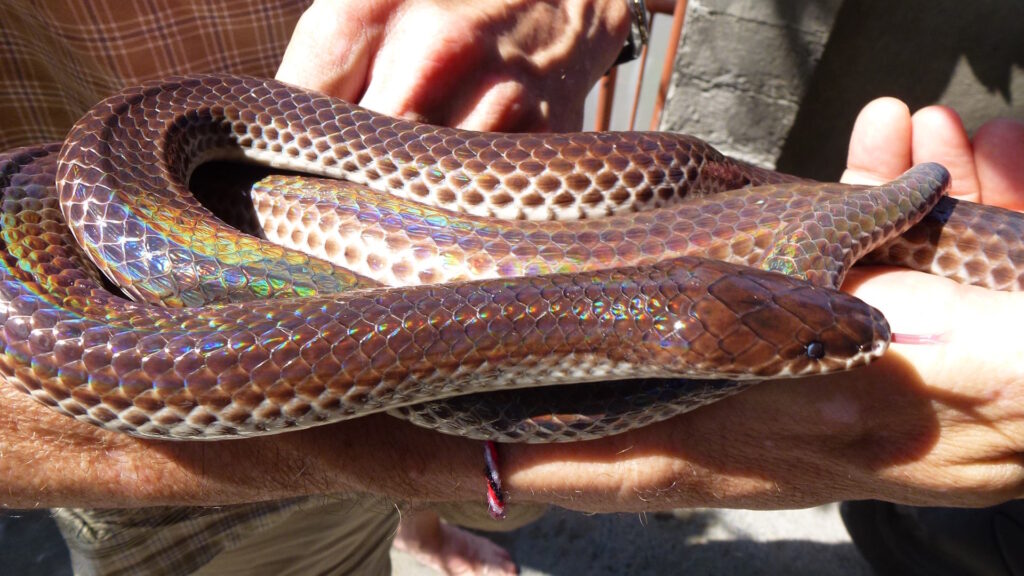
The Sunbeam Snake may initially appear unremarkable with its solid black or dark brown coloration, but this perception changes dramatically when light strikes its highly iridescent scales, creating a breathtaking rainbow effect that seems to ripple across its body with every movement. Native to Southeast Asia, including Thailand, Cambodia, Vietnam, and Indonesia, these secretive snakes spend most of their time burrowing through loose soil and leaf litter in tropical forests and agricultural areas. Their specialized, highly polished scales serve both aesthetic and functional purposes, reducing friction as they move through soil while creating one of the most striking iridescent displays in the snake world. Despite their spectacular appearance when illuminated, Sunbeam Snakes remain relatively uncommon in captivity due to their shy nature and specialized care requirements, including their need for high humidity and suitable burrowing substrates.
Mandarin Rat Snake (Euprepiophis mandarinus)

The Mandarin Rat Snake features one of the most intricate and artistic patterns of any snake species, with a series of bold geometric designs resembling ancient Chinese calligraphy or ornamental patterns against a background that ranges from gray to brown or olive. These distinctive markings include dark-edged saddles and lateral blotches, often with yellow, orange, or white accents that create a complex visual tapestry across the snake’s entire body. Native to the forests and mountain woodlands of China, Taiwan, Vietnam, and parts of India, these medium-sized colubrids lead primarily secretive lives, hunting small rodents and occasionally birds or lizards. Despite their magnificent appearance, Mandarin Rat Snakes tend to be high-strung and defensive in captivity, often requiring specialized care and handling experience, which has limited their popularity in the pet trade despite their undeniable beauty.
Rosy Boa (Lichanura trivirgata)

The Rosy Boa displays a soothing palette of colors that can include salmon pink, rust red, cream, brown, and gray, typically arranged in three longitudinal stripes running the length of its robust body. Found in the southwestern United States and northwestern Mexico, these snakes inhabit rocky deserts, scrublands, and coastal chaparral environments where their coloration often matches the dominant hues of their native substrate. Different populations show remarkable color variation based on their geographic location – specimens from coastal California often display silver-gray with dark stripes, while those from the Mojave Desert might show vibrant orange or pink tones. Unlike many colorful snakes that are quick-moving or arboreal, Rosy Boas are slow, deliberate constrictors with a remarkably gentle temperament that rarely bite even when startled, instead releasing a musky scent or forming a defensive ball with their head tucked inside.
Milk Snake (Lampropeltis triangulum)
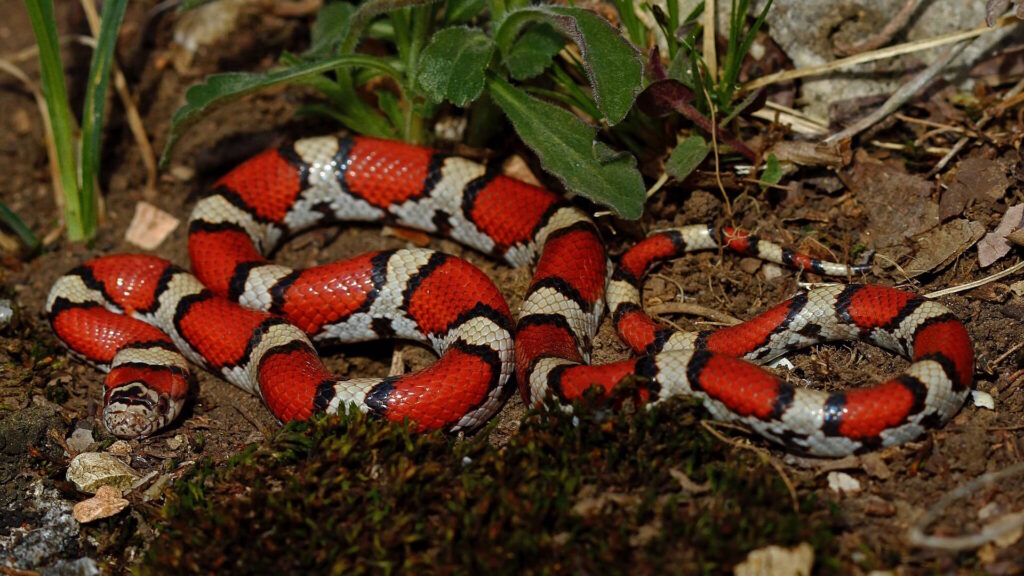
The Milk Snake represents one of the most variable colorful snakes, with over 20 recognized subspecies displaying dramatically different patterns and color combinations across their extensive range from Canada to South America. The most striking subspecies feature the classic coral snake mimicry pattern of bright red, black, and yellow or white bands, despite being completely harmless constrictors that primarily feed on rodents and other snakes. The old folk belief that these snakes could milk cows (hence their common name) is entirely mythological, though they are often found in barns where they hunt rodents attracted to livestock feed. Certain subspecies like the Sinaloan Milk Snake and the Honduran Milk Snake are particularly prized in the pet trade for their exceptionally vibrant coloration, with captive breeding programs having produced even more intensified colors and patterns while maintaining their typically calm and manageable temperament.
Amazon Tree Boa (Corallus hortulanus)
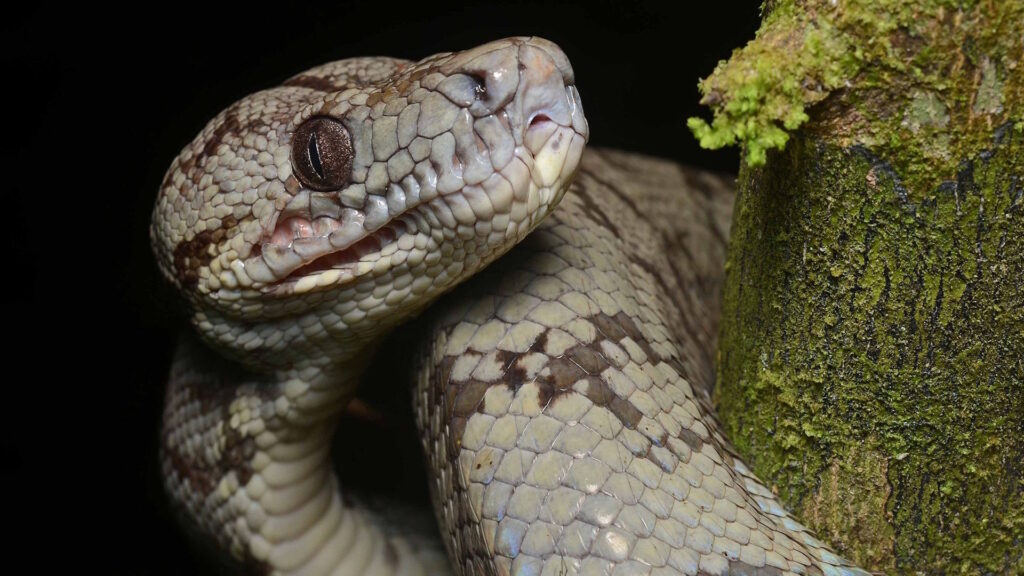
The Amazon Tree Boa exhibits perhaps the most extensive natural color variation of any snake species, with individuals from the same clutch potentially displaying dramatically different appearances ranging from solid gray, brown, or red to vibrant orange, yellow, or even turquoise blue. These colorful variations are often associated with different regions within their vast range throughout the Amazon Basin, Guyana Shield, and Atlantic Forest areas of South America. Their exceptionally slender bodies and large heads with prominent heat-sensing labial pits make them perfectly adapted for their arboreal lifestyle and nocturnal hunting of birds, bats, and small mammals. Unlike many colorful snakes that rely on camouflage, the Amazon Tree Boa’s variable coloration may represent a form of polymorphic variation that confuses predators by preventing them from forming a consistent search image, essentially creating a complex evolutionary puzzle that benefits the species through its unpredictability.
Conclusion
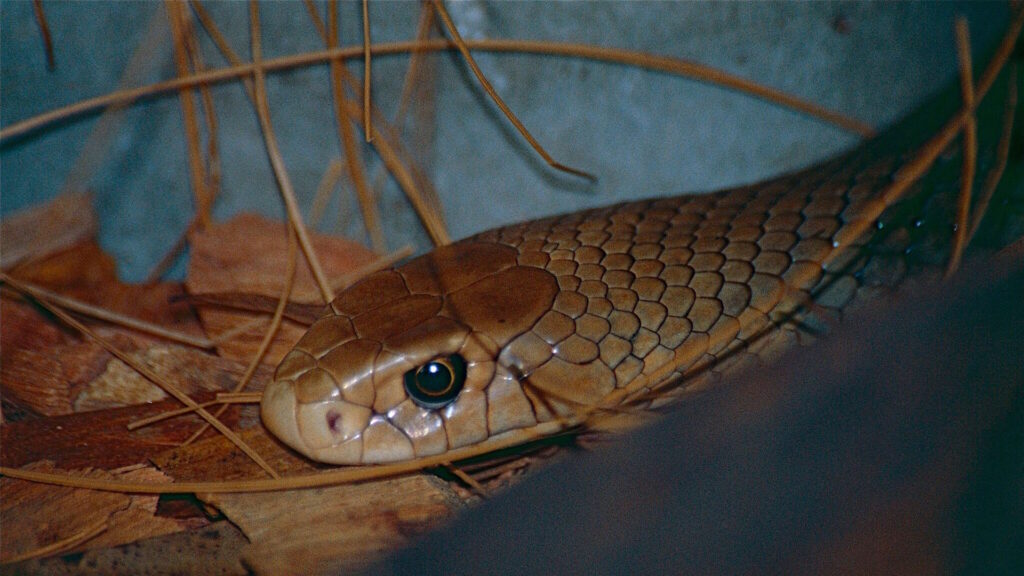
The world of non-venomous snakes is filled with a remarkable diversity of colors and patterns that rival or even surpass their venomous counterparts. These spectacular serpents demonstrate nature’s artistic capabilities, using vibrant scales for purposes ranging from camouflage to mimicry, thermoregulation to mate attraction. While many colorful snakes face threats from habitat loss and collection for the pet trade, understanding and appreciating their beauty can help foster conservation efforts. Whether serving as beneficial rodent controllers, important components of their ecosystems, or simply as living works of art that inspire wonder, these colorful non-venomous snakes remind us that some of nature’s most spectacular creations come without warning colors or dangerous defenses – just pure, evolutionary artistry expressed through scales.

